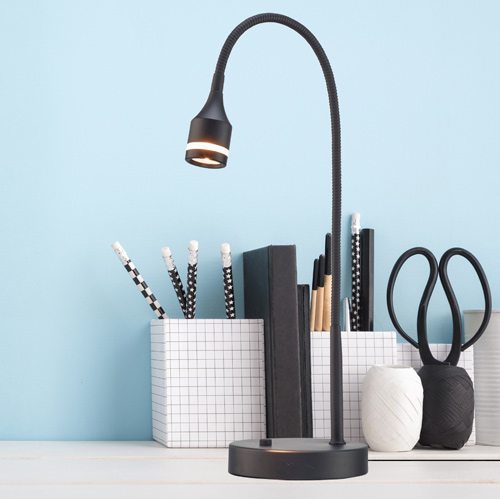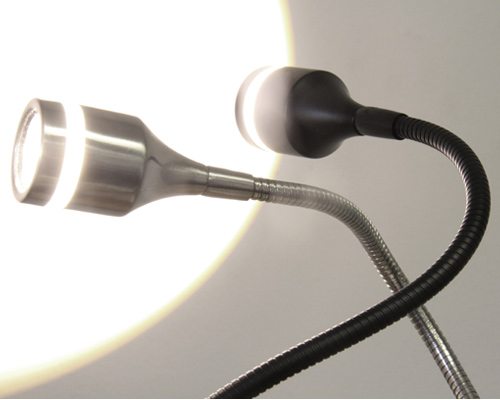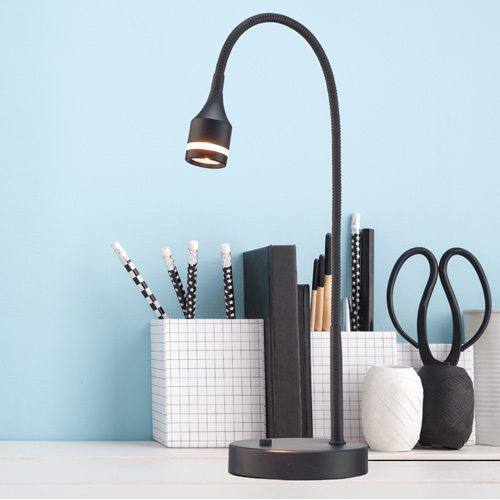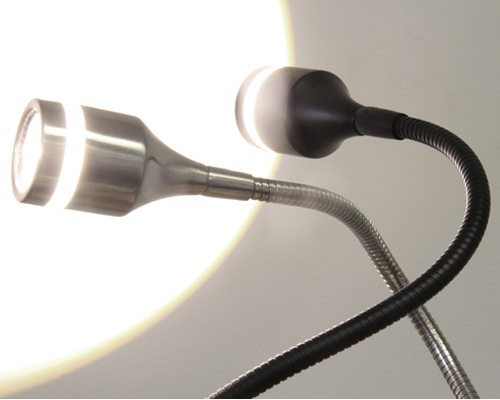 |
| Enjoy Overarching Lamps in floor and desk models, in brushed silver or matte black. Consider buying two for either side of your sofa or bed, and thus avoid battles for what may become the favorite reading light in your home. |
|
|
| | How to Position Your Light Optimally for Reading
I had a friend who complained that she got headaches when she practiced piano. Her mother thought she was slacking off. Then one day my friend happened to rest a small cosmetics mirror temporarily on her piano music. She had to cover her eyes with her hands as the bulb from the piano lamp on top of their upright piano was reflecting straight into her eyes. She reasoned, correctly, that her white sheet music was also reflecting glare back into her eyes when she practiced. She switched off the piano lamp and brought a floor lamp in position behind her left shoulder. She practiced headache free from then on. My friend had stumbled onto a trick of the trade that lighting engineers use to check their own lighting designs. The ideal set up for reading (at least reading ink on paper) is when the light comes from behind you, hits the page with sufficient light to optimize contrast between ink and paper, and then bounces off and away from you. Thus if you find yourself in a room with a great view which is producing the main light into the room, you should (unfortunately) turn your chair away from the view so that the light from the window illuminates your page and not your eyes. Do your own mirror test to make sure your reading arrangement will be pleasurable and not painful. One more tip: If you are right handed, light coming from over your left shoulder will cast fewer shadows from your hand when you turn the pages. Do the opposite, of course, if you normally turn pages with your left hand. |
|
 |
|
|
 |
| Enjoy Overarching Lamps in floor and desk models, in brushed silver or matte black. Consider buying two for either side of your sofa or bed, and thus avoid battles for what may become the favorite reading light in your home. |
|
|
| | How to Position Your Light Optimally for Reading
I had a friend who complained that she got headaches when she practiced piano. Her mother thought she was slacking off. Then one day my friend happened to rest a small cosmetics mirror temporarily on her piano music. She had to cover her eyes with her hands as the bulb from the piano lamp on top of their upright piano was reflecting straight into her eyes. She reasoned, correctly, that her white sheet music was also reflecting glare back into her eyes when she practiced. She switched off the piano lamp and brought a floor lamp in position behind her left shoulder. She practiced headache free from then on. My friend had stumbled onto a trick of the trade that lighting engineers use to check their own lighting designs. The ideal set up for reading (at least reading ink on paper) is when the light comes from behind you, hits the page with sufficient light to optimize contrast between ink and paper, and then bounces off and away from you. Thus if you find yourself in a room with a great view which is producing the main light into the room, you should (unfortunately) turn your chair away from the view so that the light from the window illuminates your page and not your eyes. Do your own mirror test to make sure your reading arrangement will be pleasurable and not painful. One more tip: If you are right handed, light coming from over your left shoulder will cast fewer shadows from your hand when you turn the pages. Do the opposite, of course, if you normally turn pages with your left hand. |
|
 |
|
|
| Leopard Convertible Clutch |
|
| | | |
|
|
|